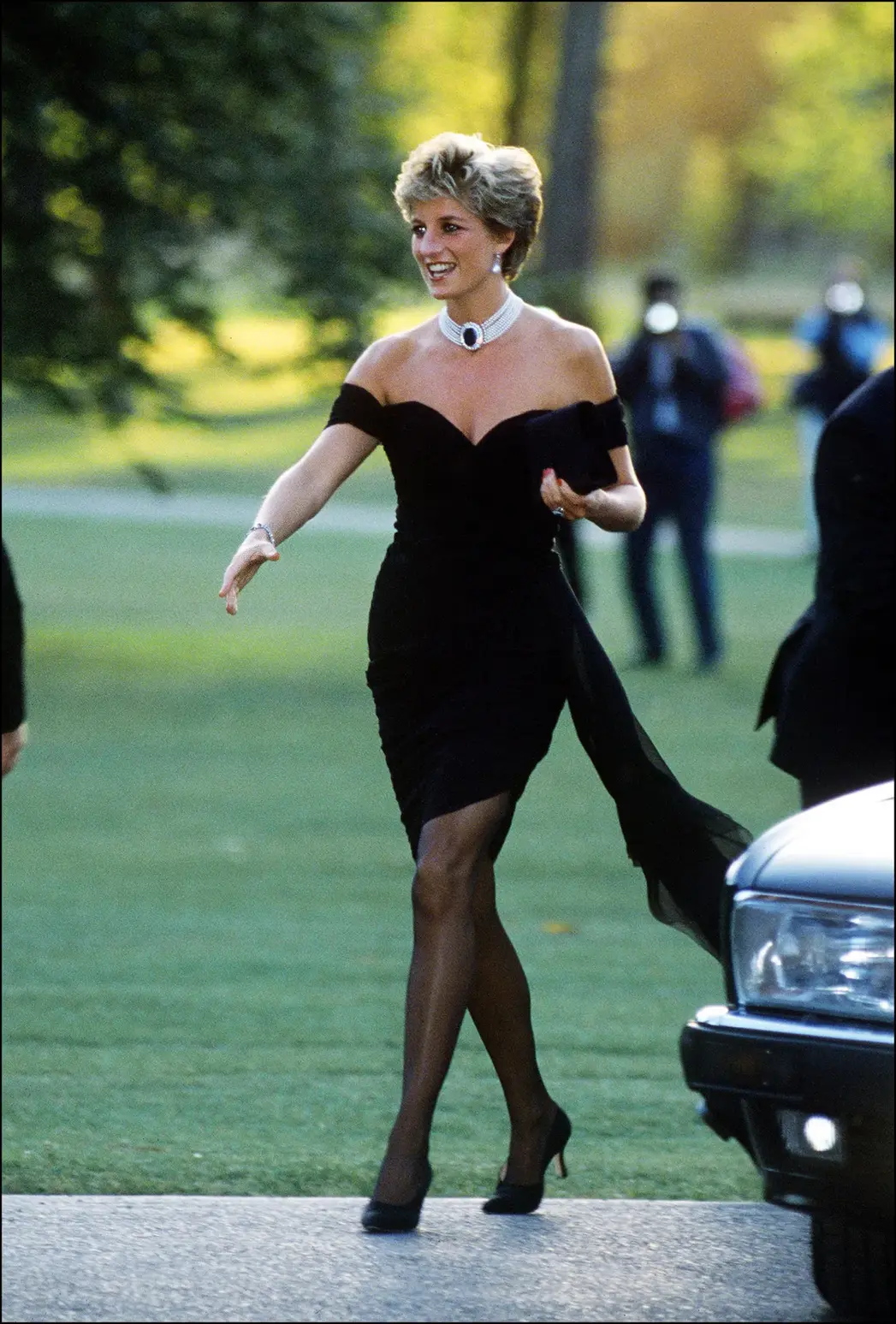The monarchy had centuries of oaths, and decrees, but Diana had a night, a dress, and a look that cracked the marble of that tradition. In that midnight silk, she didn’t just wear history, she commanded it.

The monarchy had centuries of oaths, and decrees, but Diana had a night, a dress, and a look that cracked the marble of that tradition. In that midnight silk, she didn’t just wear history, she commanded it.
June 29, 1994
The monarchy had centuries of oaths, and decrees, but Diana had a night, a dress, and a look that cracked the marble of that tradition. In that midnight silk, she didn’t just wear history, she commanded it.
June 29, 1994, a summer night in London, and a revolution disguised as couture stepped out of a car. Princess Diana, radiant in black silk chiffon, moved through the flashbulbs outside the Serpentine Gallery with the calm of a woman who already knew she had changed the story.
Across the city, Prince Charles sat on national television, confessing to his affair with Camilla Parker Bowles. Yet by dawn, the world spoke only of Diana. The Sun thundered, “The Thrilla He Left to Woo Camilla,” and every editor in Britain reached for the same photograph: Diana in the off-shoulder Christina Stambolian dress that had slept in her wardrobe for three years, hung untouched - too bold, too revealing, too free for the woman she once was.
Royals wore black only in mourning, and that night, Diana mourned nothing. She resurrected herself. The asymmetrical hemline, the bare shoulders, the confident stride, all composed a manifesto of autonomy.
Her sapphire and pearl choker once a brooch gifted by the Queen Mother framed her collarbones like a crown reimagined. The sapphire engagement ring still glinted on her hand, a symbol not of marriage, but of ownership. Every element whispered defiance through elegance.
Julia Peyton-Jones, then director of the Serpentine, remembered the crowd gasping as Diana stepped out. “She looked as if she had come down from another planet.” Perhaps she had, a place where vulnerability could exist beside power, and grace could burn like fire.
That night, Charles offered regret. Diana offered spectacle. One spoke of mistakes; the other embodied metamorphosis. One told the world what broke him; the other showed what survival looked like. In a single evening, she transformed betrayal into power and redefined what scandal could look like.